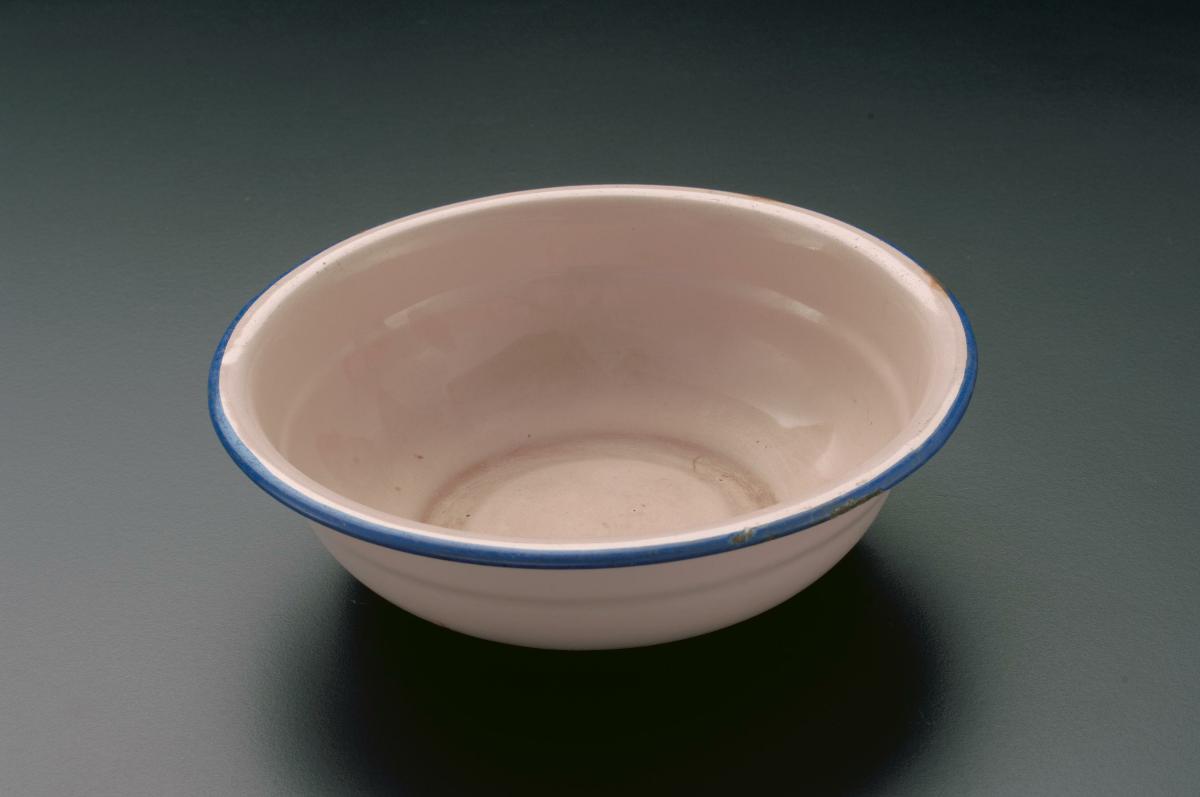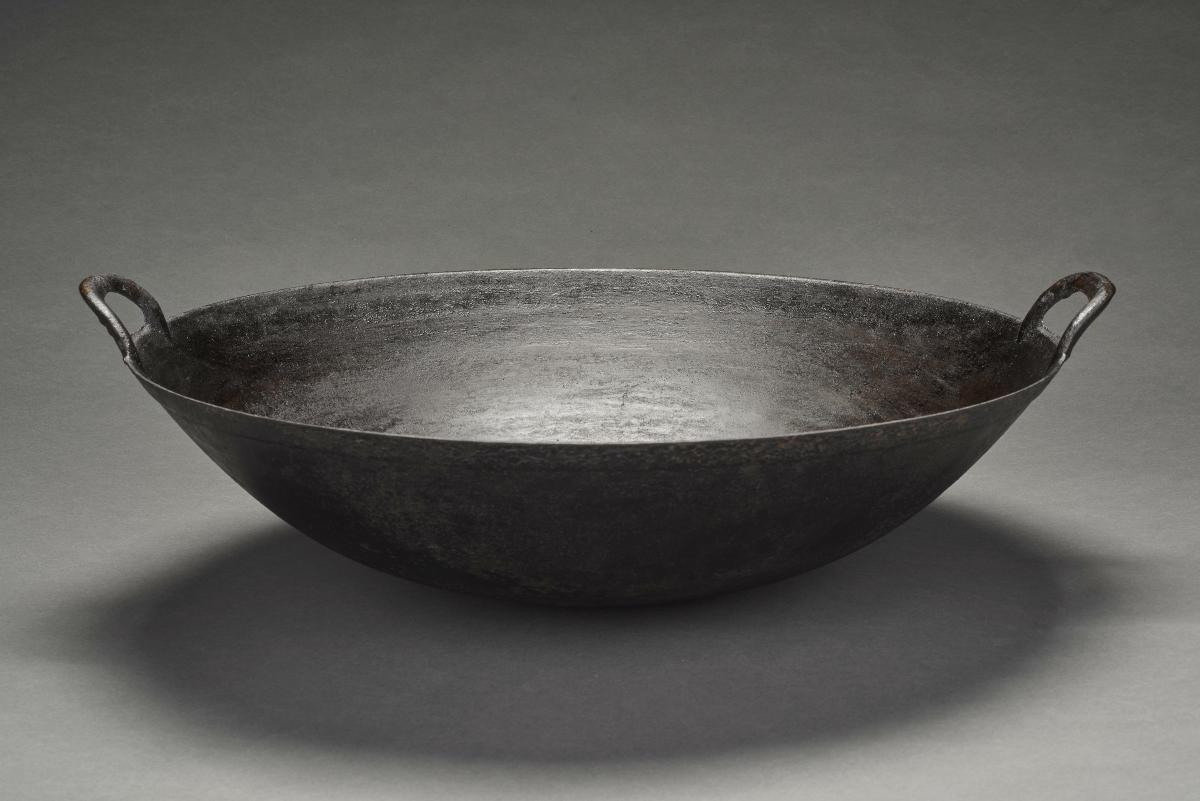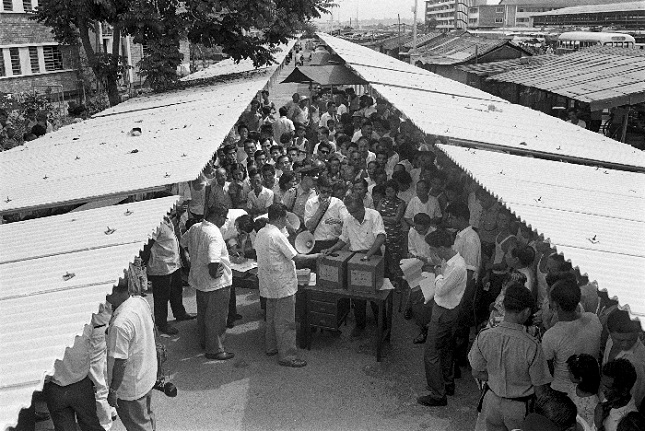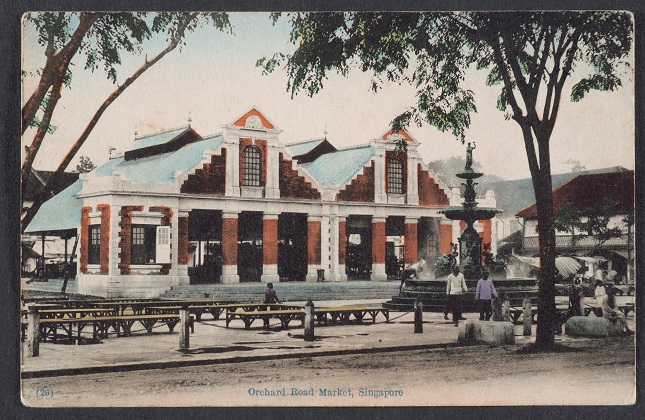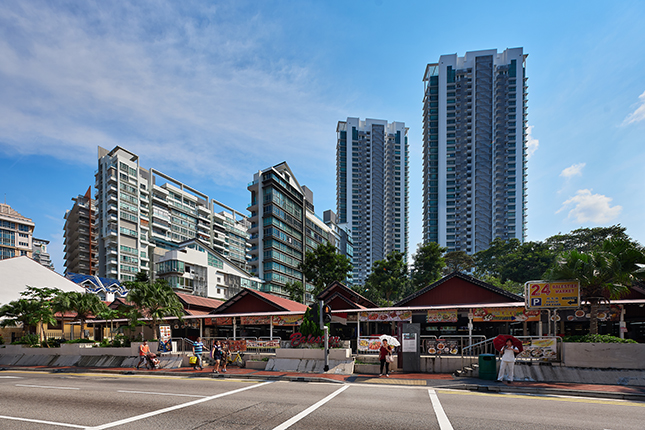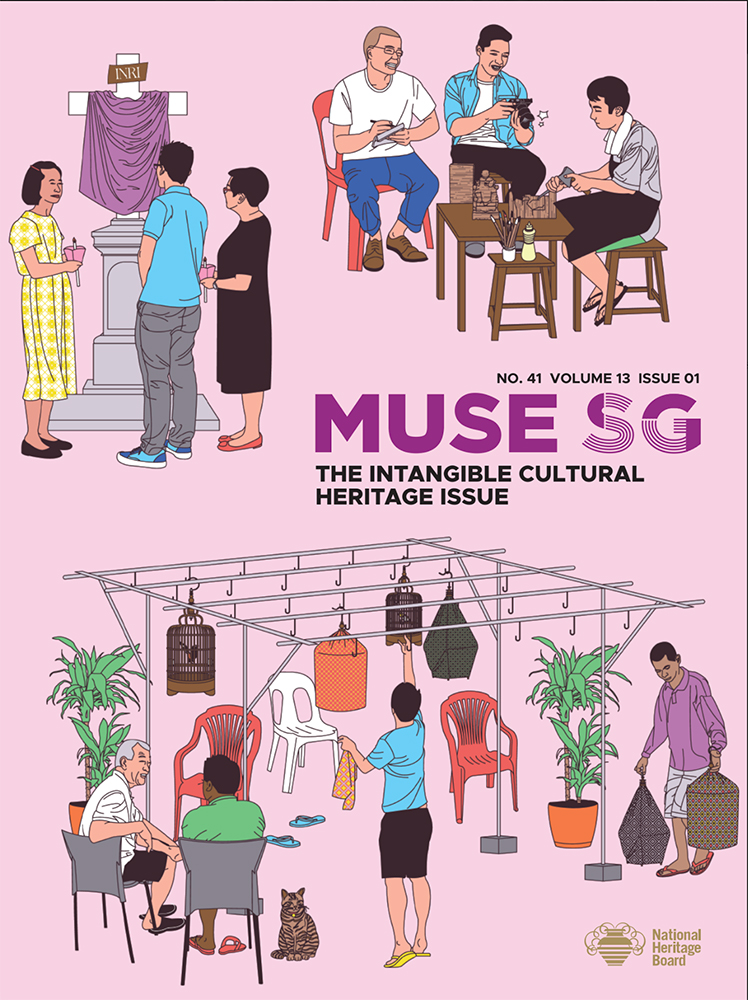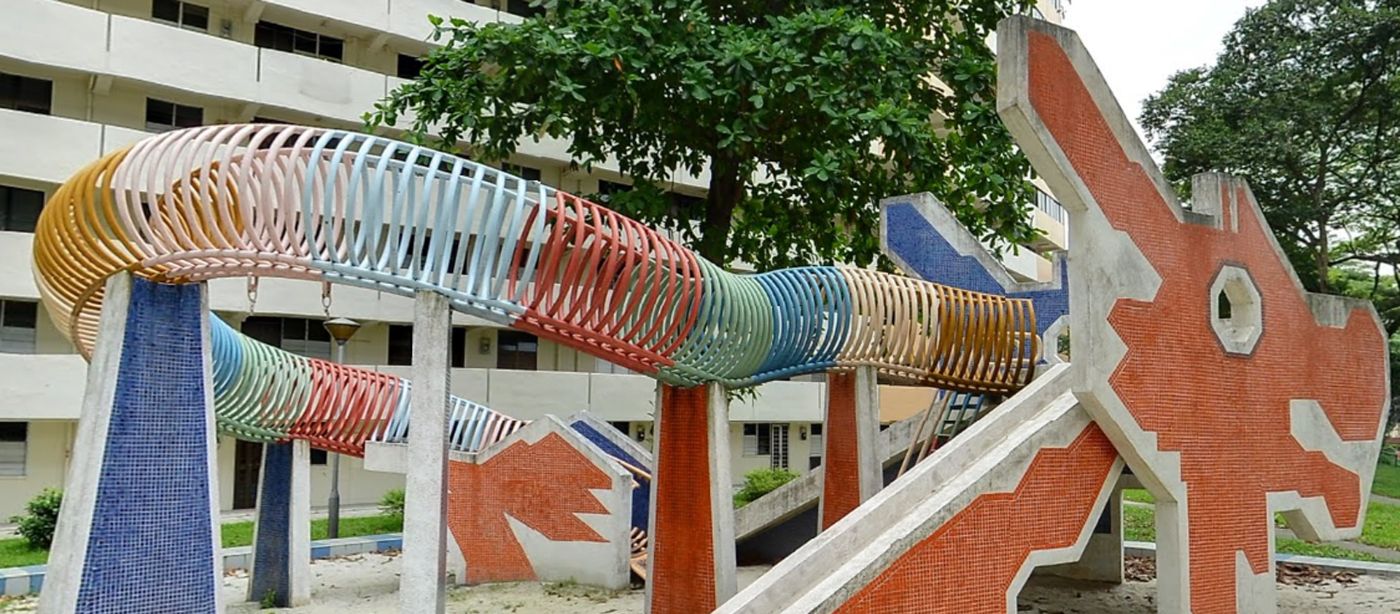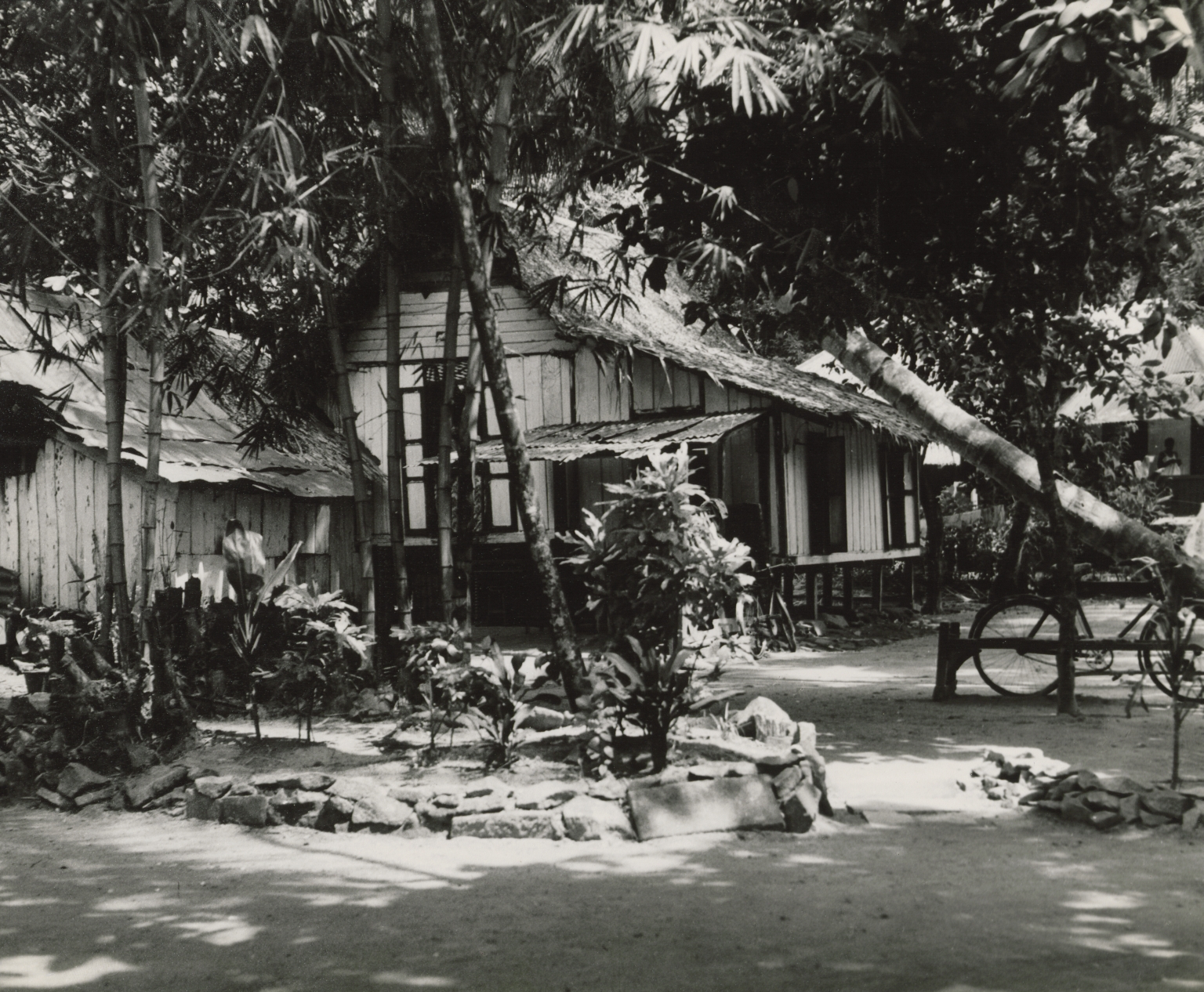Char Kway Teow
Char kway teow (炒粿条), or stir-fried flat rice noodles, is a popular dish which can be commonly found in hawker centres, food courts and coffee shops in Singapore. The base of the dish is Teochew kway teow (flat noodles) and Hokkien mee (yellow noodles), accompanied by eggs, cockles, prawns, vegetables, and processed food items such as fishcakes and Chinese sausages. Char kway teow gets its unique flavour from a combination of sweet dark soya sauce, garlic, and lard oil, as well as the smoky aroma from wok hei, a Chinese stir-fry technique done over very high heat. Its defining flavour is enhanced by “cockles water” derived from the icy water in which frozen cockles are thawed. Traditonally, char kway teow was served on light brown opeh (betel) leaves or banana leaves.
Geographic Location
Some say that char kway teow made its first appearance in Singapore at the Ellenborough Market, also known as the Teochew Market or Pasar Bahru (New Market). Today, char kway teow can found in stalls at hawker centres, coffee shops and food courts.
Besides Singapore, char kway teow can be found in various neighbouring countries, each with their own variations. In Malaysia, Penang’s version of char kway teow leaves out the dark soya sauce for a lighter taste. Thailand’s pad see ew uses a broader flat noodle with mustard greens.
Communities Involved
Despite its Hokkien name, the evolution and proliferation of the dish in Southeast Asia relate to the migratory experience of Chinese diasporic communities, particularly the Teochews from the Chaoshan region of eastern Guangdong province.
Today, stall-owners of char kway teow tend to be the older generation, though there are still second and third generation hawkers who continue family-run stalls. The sauce concoction of char kway teow can be a trade secret to many hawkers, while the wok frying technique needs to be picked up with considerable training and practice.
Char kway teow in Singapore is enjoyed and consumed by the wider community.
Associated Social and Cultural Practices
Char kway teow began as a simple meal consumed by manual labourers. Over time, various ingredients were added to the dish, which has been gradually evolving over the years. Some of the more notable changes include the type of eggs and vegetables used. Previously, hawkers used duck eggs for its rich fragrance, but they turned to chicken eggs when the duck-egg supply dipped. As for vegetables, beansprouts continue to be a staple ingredient. Vegetables such as koo chye (Chinese chives), chye sim (mustard greens), and kai lan (Chinese kale) used to be commonplace but are seen less often now.
Variations of char kway teow can be found both locally and in the region. Halal versions now exist in Singapore. In other countries, the ingredients in char kway teow are slightly different to the version found in Singapore.
Experience of a Practitioner
An old hand at the hawker trade, Mr Tay Key Hwa has spent nearly three decades cooking up a feast for his eager customers. He is the owner of Father and Son Char Kway Teow & Carrot Cake stall at Bukit Panjang Hawker Centre. He opened his first stall in 1980 selling carrot cake and began selling char kway teow in 1983. He adapts his char kway teow to his customers’ preferences while maintaining its taste. For instance, he offers a healthier version of char kway teow made with peanut or vegetable oil, rather than the traditional lard oil, and uses plain water rather than the “cockle water”. Mr Tay says that if the cook puts in the effort to perfect his frying technique, the dish will still be tasty despite such changes.
Present Status
There are some Singaporeans that are worried about the long-term future of the dish, due to challenges such as how the wok hei technique takes at least a month to pick up. For those eager to learn, the bigger challenge is that the recipe for the sauce is often a closely-guarded trade secret.
Despite these challenges, there are char kway teow hawkers who are keen to pass on their skills to the next generation. At home, Mr Tay teaches his children how to make various hawker dishes. At work, his stall has space for an apprentice to learn and practice alongside him. Veteran hawkers like him hold fast to their dream of passing on their knowledge and skills to younger generations.
For now, char kway teow remains readily available in local eateries across Singapore. Its existence looks set to continue into the near future given current popularity levels.
References
Reference No.: ICH-063
Date of Inclusion: March 2019
References
Mak, Veronica Sau Wa. “Southeast Asian Chinese Food in Tea Cafe and Noodle Shops in
Hong Kong.” In Tan, Chee-Beng (ed), Chinese Food and Foodways in Southeast Asia and Beyond. Singapore: NUS Press, 2011.
Tay, Leslie. The End of Char Kway Teow and Other Hawker Mysteries. Singapore: Epigram Books, 2011.






